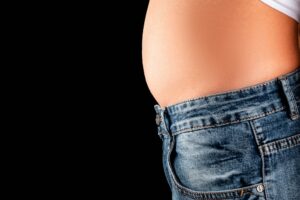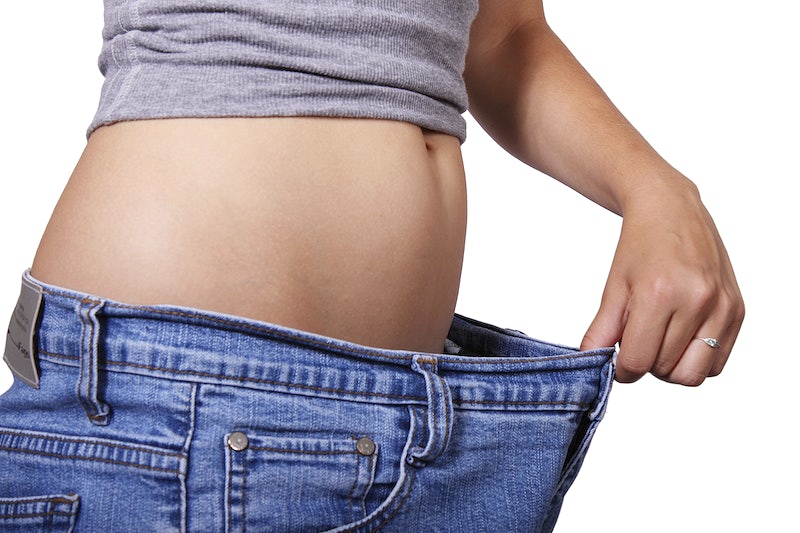Do you ever wonder what happens to fat when you lose weight? Well, wonder no more! In this blog post, we will discuss what happens to the fat that is lost. We will also talk about how the body uses energy and why it is essential to maintain a healthy weight. So, if you’re interested in learning more about weight loss and metabolism, keep reading!
Contents
What Is Body Fat?
Fat is an important part of a healthy body. It’s found in your muscles, organs, bones, and other tissues. Fat helps store energy, protect your organs, and insulate your body from the cold. But when you have too much fat in relation to lean muscle mass, you can become overweight or obese.
Difference Between Fat And Weight
Fat and weight are two different things, and it’s important to understand the difference. Let’s see what happens to fat when you lose weight. Fat is stored energy in your body, while weight includes both fat and muscle mass. When dieting or exercising to lose weight, you may be losing a combination of both fat and muscle mass.
What Happens To Fat When You Lose Weight?

When we lose weight, our bodies don’t simply get rid of the fat we shed. Instead, the fat cells decrease in size as the triglycerides. Triglycerides are the cells that make up fat tissues. These components include fatty acids and glycerol, which can be used to help create energy or build new tissue.
Once this process is complete, these components are transported through the bloodstream to other parts of your body. These components can be used as fuel or turned into new tissues such as muscle. The glycerol component helps provide glucose for your brain and muscles. Fatty acids are burned off as heat energy by specialized cells called adipocytes or “fat cells”.
In some cases, fat can also be eliminated from your body in the form of waste. We excrete some fatty acids through our breath and sweat, while others are sent to the liver for detoxification and eventual elimination through feces.
So when we diet and lose weight, our bodies don’t necessarily “burn off” all of our fat. Instead, it is broken down into smaller components that can then be used in various ways by other parts of the body. This process helps us maintain energy levels, create new tissues and eliminate toxins from our systems – all essential elements for a healthy lifestyle!
So although it may seem like you’re just shedding weight without making any real changes to your body composition, there’s actually a lot going on inside that helps keep you healthy. So don’t be discouraged if the number on the scale isn’t dropping as quickly as you’d like – your body is doing a lot of work to get rid of those extra fat cells! With dedication and hard work, you’ll eventually reach your weight loss goals.
How To Lose Fat?
Losing weight can be difficult, and it can be hard to understand how fat loss really works. When you diet, the fat that is lost doesn’t just disappear—it is converted into energy.
Calorie Deficit
 The process of losing fat starts with a decrease in caloric intake. Calorie restriction leads to a reduction in the body’s immediate source of energy (glycogen). When glycogen stores are depleted, the body begins to break down fatty acids stored in adipose tissue so they can be metabolized for energy.
The process of losing fat starts with a decrease in caloric intake. Calorie restriction leads to a reduction in the body’s immediate source of energy (glycogen). When glycogen stores are depleted, the body begins to break down fatty acids stored in adipose tissue so they can be metabolized for energy.
This breakdown results in ketones being released into the bloodstream, which supplies energy for other bodily processes. The byproducts of fatty acid metabolism are then transported through the bloodstream to organs such as the liver and kidneys for excretion.
Exercise

When combined with regular exercise, a calorie-restricted diet is the most effective way to lose fat. Exercise increases the body’s energy expenditure and helps burn more calories than dietary restriction alone. Additionally, training uses up glycogen stores quickly, forcing the body to utilize stored fat as fuel.
The combination of regular aerobic exercise and a healthy calorie-restricted diet is key to losing weight in a safe and sustainable manner. However, it is important not to expect immediate results—it can take weeks or even months for changes in body composition to become visible. Patience and consistency are essential for long-term success when trying to reach your health goals!
To sum up, when you reduce your caloric intake and increase physical activity, your body begins breaking down fatty acids stored in adipose tissue for energy. This process results in ketones being released into the bloodstream, and these byproducts are eventually excreted by the organs. With patience and consistency, a combination of calorie restriction and exercise can help you reach your weight loss goals in a healthy manner.
Conclusion
The human body is an amazing machine, and when it comes to weight loss, the process of breaking down fat cells and using them for energy is truly fascinating. When you diet and exercise, your body releases fatty acids from stored fat which are then used by the body as fuel or converted into energy. This process helps to reduce overall body fat and improve overall health.
Consider contacting FitMantra for additional information on nutrition and fitness. You can also get in touch with their nutrition experts through our online nutrition counseling, who can guide you through the process and help you achieve your fitness goals. You can also lose weight with the help of our weight loss program. Download our Fitness App on Android to learn more about us.

Really great information can be found on web blog.Blog range